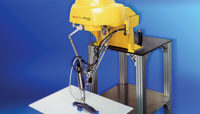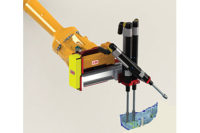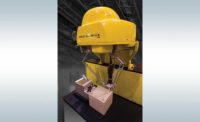Several issues need to be addressed before there will be more widespread use of robotic screwdriving. Cost, robot design, training, culture and other factors must be considered by manufacturing engineers.
ASSEMBLY recently asked several leading experts to discuss the pros and cons of robotic screwdriving vs. traditional benchtop screwdriving equipment: Kevin Buckner, design engineer at Design Tool Inc.; Patrick Laughter, engineering manager at DENSO Robotics; Lisa Maitre, senior applications engineer at Kawasaki Robotics USA Inc.; and Neil Maniccia, global product group manager for ASG Precision Fastening, a division of Jergens Inc. Here’s what they had to say:
Buckner: There are several factors that should be examined when determining the suitability of robotic screwdriving for a particular process. These factors include quality requirements, fastener size, efficiency gains, and operator health and safety. For example, if the incorrect sequence of tightening or incorrect screw placement can result in product failure, then robotic screwdriving solves this problem. Also, if the environment in which the fasteners are installed is hazardous to the operator, robots are an obvious choice. Efficiency gains for robotic systems should also be considered, as the operator can perform other tasks while the screws are driven. Finally, the size of the fastener will be a primary factor in the cost of the robot, as larger fasteners require larger, more expensive robots. Robotic machines offer higher volume productivity while reducing the cost of the assembly process. The cost of the robot must be compared with the cost of traditional assembly techniques. It is difficult to quantify actual quality costs, but in many cases, the potential costs and liabilities of assembly mistakes tip the scales in favor of robotic equipment.
Laughter: It comes down to return on investment. Each application has its own ROI. Some things to consider are cost of the equipment, current personnel capabilities, number of different parts and changeovers required. Also, the required verification process [is important]. Whether it’s for screwdriving or other applications, many manufacturers are still reluctant to use robots. Overcoming that stigma is still a major hurdle. As manufacturers learn more about robots and see their advantages, however—particularly with respect to verifiability—that situation is changing.
Maitre: The major criteria when considering automating a robotic screwdriving application are cost, safety, flexibility and quality. Return on investment can be calculated by considering equipment cost, engineering and installation labor, and maintenance costs vs. fastening screws manually. Quality and safety are also important factors that should be measured when considering automation. Tracking quality is important with critical components, such as the fasteners used on the flywheel of an automobile engine. Ergonomics also plays an important role, because performing highly repetitive tasks for extended periods can lead to serious health consequences for assemblers.
Maniccia: When [thinking about] implementing a robot into an application, [engineers should] consider the number of screws, the substrates, the tack time, product life cycle, potential bottlenecks and a time study.




